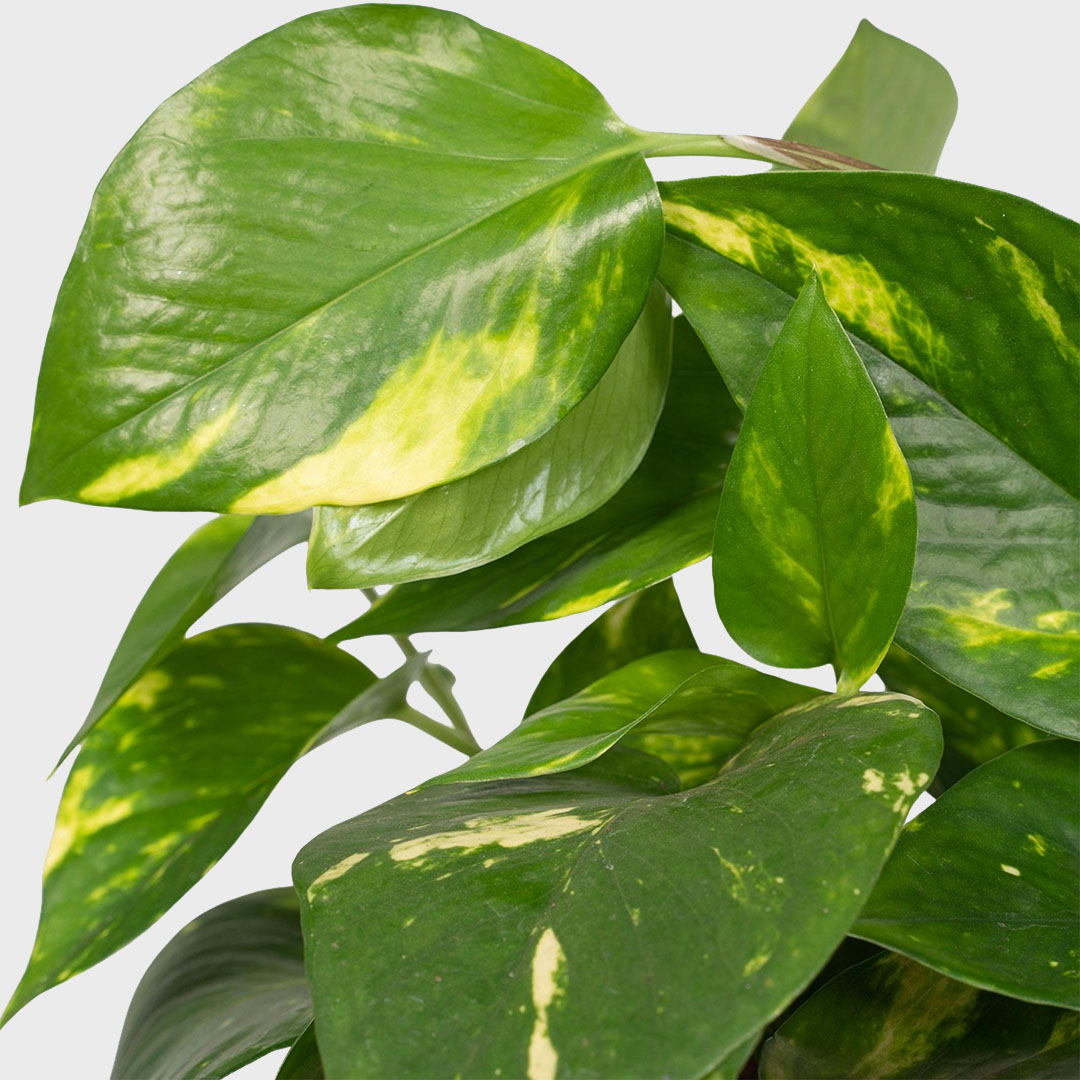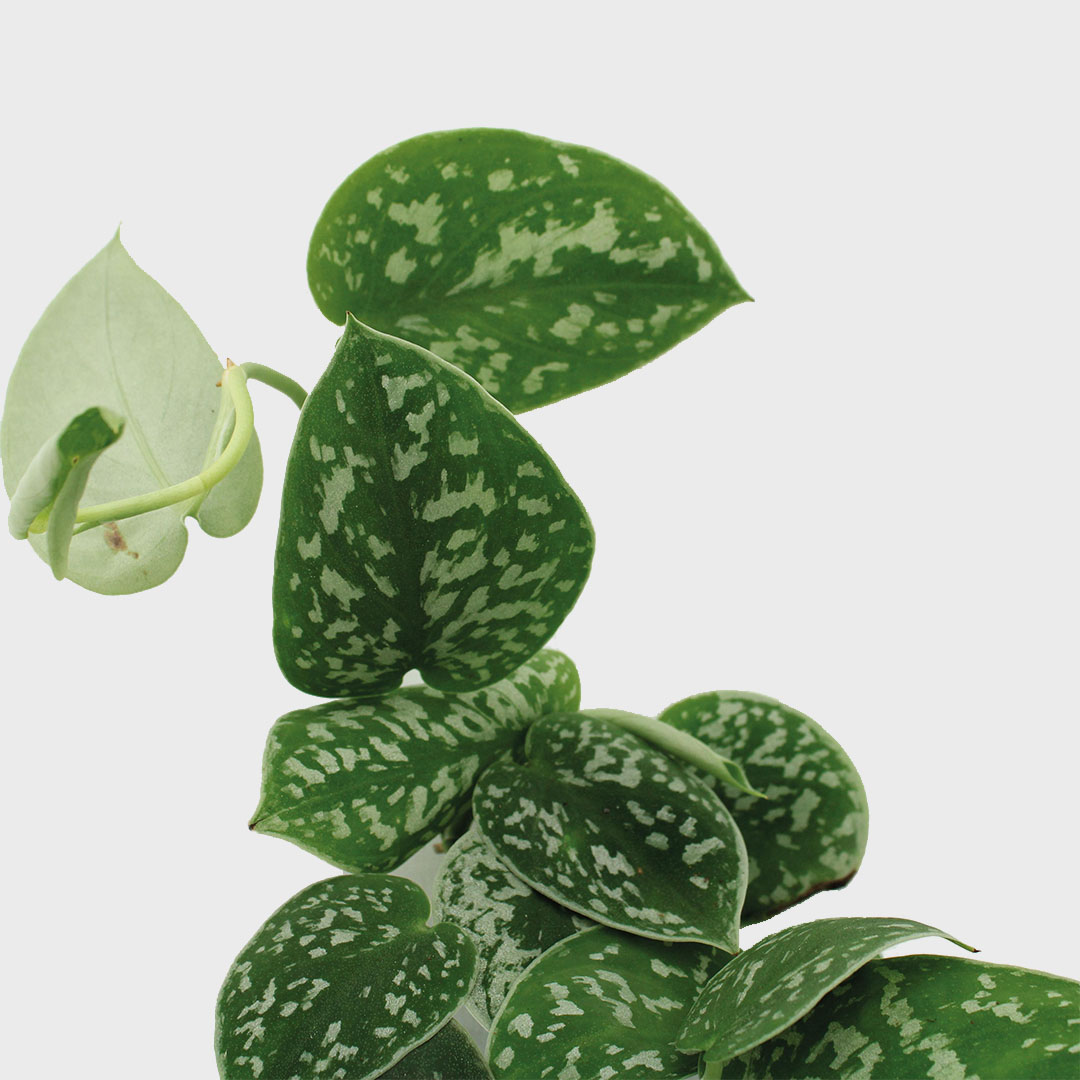
Deliver to
France
 English
EnglishThe Epipremnum Aureum is a striking tropical plant that is fairly new to gardening nurseries, but they get a lot of attention due to its vibrant colors and aesthetic appeal. It features large-leaved climbers with heart-shaped leaves splashed with silvery gray spots, giving them a sheen finish.


Medium light
Water once a week
Toxic
Air-purifying
The Epipremnum likes to be placed in a spot with lots of light. Not all species tolerate bright light well. It is best to place the plant in medium bright light, but they tolerate partial shade too. The Epipremnum prefers a spot next to a window on the west or east. A spot near the south is of course also possible. Make sure that the plant is at least 2 metres away from the window.
It is important to always keep the soil of the Epipremnum moist. You can check this to with your finger in the soil. Never let the Epipremnum dry out, but don't overwater either. It is best to water the Epipremnum once a week all year round. In the winter it may be a smaller amount.
The Epipremnum uses a lot of energy from spring onwards to make new leaves. As a result, the plant needs extra nutrients. You can provide these nutrients by means of plant nutrition. We recommend giving plant nutrition once every two weeks. From spring until autumn. After autumn and in winter it is better not to give extra nutrients. In the winter, plant nutrition can actually be harmful for the Epipremnum!
Repotting the Epipremnum isn't necessary every year. We recommend repotting the Epipremnum every 2 years. This gives the plant new nutrients and more room for root growth. The airier soil is also very good for the water flowing through. The best period to repot is spring.
The ideal temperature range for Epipremnum and Scindapsus plants is typically between 18 to 29 degrees Celsius. These plants are native to tropical regions and thrive in warm temperatures.
Pruning a Epipremnum and Scindapsus can be done to maintain the desired size and shape of the plant. Trimming long or leggy stems and leaves can help promote bushier growth. This is particularly useful if the space for the Epipremnum and Scindapsus is limited.
The Epipremnum does not suffer from any diseases. Although pests can occur on all types of plants. It is therefore good to check the plant regularly. In case of vermin, you can always use a pesticide.


Scindapsus plants can grow very fast, mostly in length. If you would like a full Scindapsus plant, you can achieve this by taking cuttings. Place the cuttings in the pot so that the plant appears fuller.
As an indoor plant, Scindapsus plants with a moss pole can grow to 2 metres tall. The plant does need a moss pole for support.
Yellow leaves are mainly caused by the wrong location for a Scindapsus. If the plant receives too little light, the leaves will turn yellow. Too much light can also cause the leaves to burn and turn yellow. If the Scindapsus suffers from yellow leaves, it is best to move the plant.
Brown leaves are often a sign of incorrect watering. If the edges of the leaves or the entire leaf is brown and crunchy, this is a sign of too little light. Brown leaves can also be caused by too much water. If the plant gets brown leaves from too much water, this is usually due to root rot.
Yes, you certainly can. Check out our tips on how to propagate the Devil's Ivy.